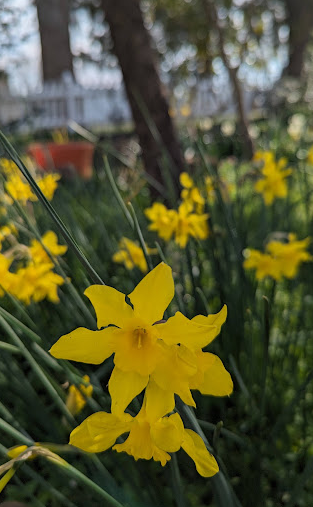Killing Plants
- Clifford Brock
- Mar 5, 2024
- 3 min read
Whether by negligence or from forces outside our control, we all lose plants. Even the most attentive experienced horticulturalists kill plants. Tony Avent, of Plant Delights, likes to say that he only gives up after he's "killed a plant 3 times". Yet I suspect he's tried certain of his favorites many more times than that. But regardless, it does hurt... especially if you've spent time and real money on something special.

Which brings me to today's topic... Recently, I just discovered almost all of my bloodroot (Sanguinaria canadensis) had rotted in their pots. These were divisions from my mom's yard that I had potted up in small 2in. containers that were destined for sale at the Cotton Mill Farmer's Market in Carrolton.

I first became suspicious when none of them were showing any signs of life, despite the ones in the ground emerging and even beginning to flower!
Bloodroot is quite distinctive when it first emerges in the Spring, as is indicated by the photo below.
This prompted me to empty one of the containers and discover all the rhizomes were mushy and putrid smelling... none were firm or the rich blood-red color they should be. I was perturbed and could have kicked something, but I didn't.
Of course, many factors may have contributed to this outcome. I might have divided them at the wrong time of year- perhaps digging and cutting them up during the cold months isn't the best time to propagate this species? These were dug and divided in November or early December. Does anyone know when the best time to divide bloodroots? Does anyone actually read my blog?
It could also have been the weather, or more specifically, all that rain we've had in the last few months. I made no effort to shield them from all that moisture, and though I tried my best not to over-water them, I know I accidentally watered them at least once. I find it hard to water just a few things... I get overzealous with watering! But as I SHOULD know, overwatering probably kills more plants than not enough!
Perhaps the potting soil I created for them didn't drain properly. I mixed about half potting soil with perlite and some large chunks of orchid bark. Mixtures heavy in perlite are usually recommended for ephemerals like this, but perhaps I should have incorporated horticultural sand or mostly the orchid bark? Perhaps the drainage wasn't the greatest? It does seem as if small pots hold more moisture than larger ones, which is kinda counterintuitive. Does anyone know the physics behind this?
All this is to say that gardening is complicated. I may never know the exact reason all these plants rotted. There are just too many variables to account for. The natural world isn't a sterile laboratory, and we can't easily determine causality.
What I can say is that root rot will probably always be my nemesis, and I'll continue to kill plants over and over... Acceptance of this reality is essential in coping with the uncertainty of the natural world. I jokingly say that people with extreme OCD should probably consider a different career than gardening. It just isn't an activity that can ever be "controlled" or ever be "completed". Yet many gardeners and especially plant collectors verge on obsessive personalities.
Unfortunate events like this are important reminders that death is just a natural and unavoidable outcome of gardening. No matter how diligent we are, no matter how much thought or money we put into things, we will always be at the mercy of Mother Nature and our own ignorance! That's one of the basic tenets of gardening. Because we are dealing with living beings there's always a risk of failure. And it is this ever-present risk that makes achieving any level of success even more glorious!




Comments